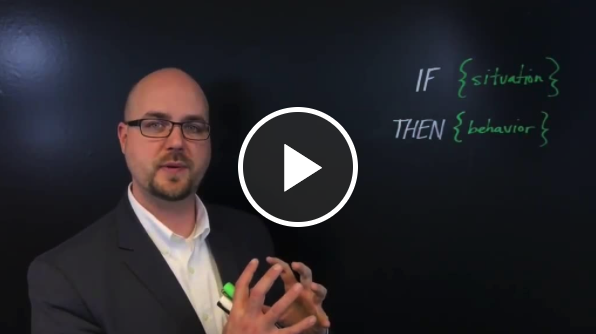Watch My Quick Video: How to Follow Up on More of Your Goals
Take a moment to think about the goals you have for your real estate business.
Some of those goals are pretty ambitious—perhaps you want to double the number of listings you get this summer. Other goals are a little lighter, like becoming more comfortable talking on the phone.
Whatever your goals are, you can accomplish them. You can be better than you are today.
Not sure how to be better and accomplish your goals? It might just be a matter of tweaking your approach.
In this blog post, I’ll share 3 interesting concepts that will give you some new perspectives on how to pursue your goals.
1) Begin with the end in mind
On the subject of goals, one of the most frequently quoted authors is Stephen Covey, who wrote: “Begin with the end in mind.” This is Habit #2 in Covey’s book The 7 Habits of Highly Effective People, in which he writes:
“To begin with the end in mind means to start with a clear understanding of your destination. It means to know where you’re going so that you better understand where you are now and so that the steps you take are always in the right direction.”
To keep your goals top of mind, Covey suggests developing a personal mission statement. Covey says that your mission statement should focus on the type of person you want to be (character), the things you want to accomplish or contribute, and the personal values you will uphold to accomplish your goals.
And here’s why this is such a valuable tool: Once you’ve developed your personal mission statement, you can refer back to it any time you have a decision to make regarding your career or your life.
“You have the basic direction from which you set your long- and short-term goals. You have the power of a written constitution based on correct principles, against which every decision concerning the most effective use of your time, your talents, and your energies can be effectively measured.”
To get inspired, check out these personal mission statements of 5 famous CEOs.
2) Don’t depend solely on “the power of positive thinking”
Gabriele Oettingen, professor of psychology at New York University and the University of Hamburg, performed numerous studies that demonstrated the negative consequences of positive thinking.
In one study, she asked women participating in a weight loss program to imagine themselves in different scenarios—successfully losing weight, facing temptations, etc. It turned out that the women who imagined more positive outcomes for themselves actually lost fewer pounds.
In her New York Times article, The Problem With Positive Thinking, Oettingen writes:
“Positive thinking fools our minds into perceiving that we’ve already attained our goal, slackening our readiness to pursue it.”
Instead of relying solely on “the power of positive thinking,” Oettingen suggests using a method she calls mental contrasting:
“Think of a wish. For a few minutes, imagine the wish coming true, letting your mind wander and drift where it will. Then shift gears. Spend a few more minutes imagining the obstacles that stand in the way of realizing your wish.”
3) Set implementation intentions
A colleague of Oettingen’s, fellow NYU professor of psychology Peter Gollwitzer, introduced the concept of setting implementation intentions as a method for accomplishing goals. This concept involves creating if/then statements: IF {situation} THEN I will {behavior}.
Let’s say your goal is to make 5 warm calls to leads every Tuesday morning starting at 10 a.m. The idea is to create a plan for how you will make sure this gets done. So your if/then statement might look like this:
IF it is a Tuesday morning at 10 a.m., THEN I will grab a cup of water, sit down at my desk with my CRM open to show me who is due for a warm call, and start making my 5 phone calls.
You should also identify obstacles to your success (as Oettingen suggests as part of her mental contrasting exercise) and create if/then statements for combating those. Perhaps you often find yourself in the middle of another task when 10 a.m. rolls around and feel reluctant to stop and switch gears—your if/then statement could be:
IF it is a Tuesday morning at 9:50 a.m. and I am in the middle of another task, THEN I will spend 10 minutes finding a good stopping point and making a note of where I left off so I can return to it after I make my 5 warm calls.
This if/then model is built into Realvolve CRM, through a tool called a workflow. Workflows allow you to automate certain tasks by setting up a trigger (the IF scenario) that launches an action (the THEN scenario). For example:
IF Home Inspection Date is scheduled, THEN an email reminder will be sent 24 hours in advance to all parties involved.
To learn more about creating implementation intentions, check out this article by Marelisa Fabrega, author of the blog Daring To Live Fully.
It’s not enough to merely set goals. You also need to have a plan for how you will accomplish those goals, because it’s not going to happen overnight. You’re in this for the long haul.

Start by putting your goals in writing, in the form of a personal mission statement. Next, get motivated by allowing yourself to imagine what it will be like to accomplish your goals…BUT also identify all of the obstacles that will stand in your way. Finally, create detailed plans for execution (in the form of if/then statements) that will help you stay on track toward your goals.
By putting in work each day and focusing on incremental change, you CAN accomplish your goals.






